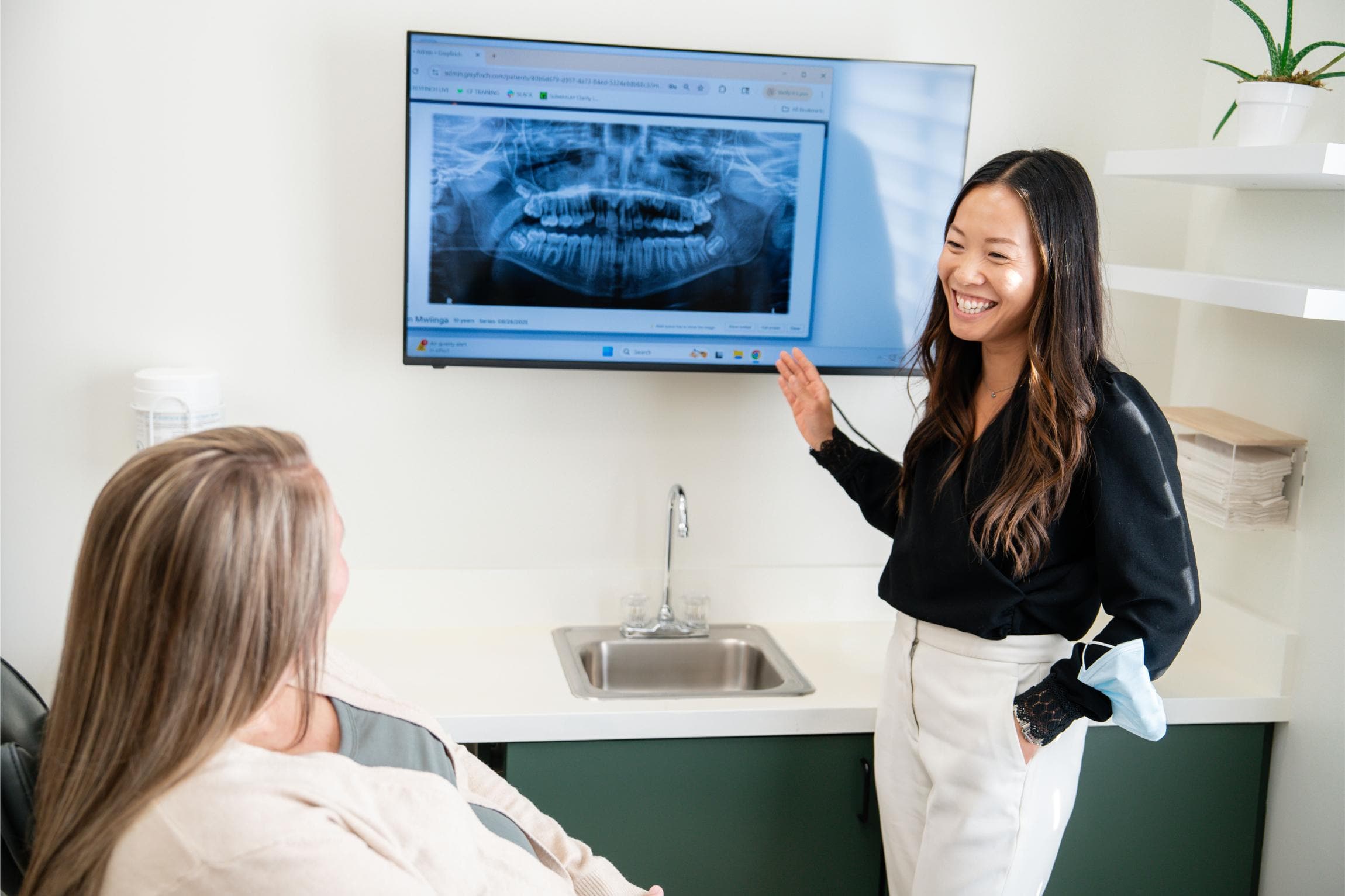Braces & Aligners in Lebanon & Zionsville
Modern Choices for Every Smile
At AW Orthodontics, Dr. Ariel Wong uses up-to-date digital tools to give families around Lebanon and Zionsville personalized braces and clear aligners.
TMJ / TMD Treatment

Soothe Jaw Strain
A balanced bite can calm the muscles around your temporomandibular joints (TMJ) to ease everyday aches and help you chew, talk, and laugh without worry.
What Is TMJ Disorder?
TMJ disorder happens when the small hinges that link your lower jaw to your skull get overworked or misaligned. You might notice popping, soreness, or headaches that start near your ears and spread to your temples.
Many cases stem from bite problems—crooked teeth, gaps, or a jaw that sits too far forward or back. When those pieces don’t line up, the joints move in ways they weren’t built to handle.
Over time, the cartilage cushions wear down. When this happens, the surrounding muscles go into defense mode, tightening and causing pain.
How Orthodontics
Eases Jaw Strain
Braces or clear aligners guide teeth into positions where the upper and lower arches fit together neatly. A balanced bite lets the joints glide instead of grind, which lowers muscle tension and cuts down on clicking or soreness.
Better alignment also spreads chewing forces evenly across your smile. That means:
- Fewer overloaded teeth
- Less night-time clenching
- A break for the muscles that power every bite and word you speak
Patients often mention fewer headaches, easier mornings, and a smoother opening and closing motion once treatment settles the bite.
In many cases, orthodontics alone is the key to keeping the jaw calm for good.
Extra Help from
Neurotoxin Injections
For stubborn muscle knots, small doses of a purified neurotoxin can add another layer of comfort. The medicine relaxes overactive jaw muscles, giving them time to reset while braces or aligners correct the bite.
The procedure takes minutes, and relief can start within days. Results last three to four months. Regular touch-ups during orthodontic treatment can break the cycle of grinding and help the joints heal.
Smooth Jaw Surgery
Sometimes bite issues go beyond what braces or aligners alone can fix. In these cases, a combination of orthodontic care and orthognathic (jaw) surgery can restore balance, comfort, and confidence.
What Is Orthognathic Surgery?
Orthognathic surgery is a hospital-based procedure that repositions the upper jaw, lower jaw, or both to correct major bite discrepancies.
An oral and maxillofacial surgeon makes planned adjustments to bone position using digital models and 3-D imaging.
The goal isn’t just a straighter profile. With jaw surgery, you can restore a stronger, more functional bite that supports clear speech, efficient chewing, and smooth breathing.
Recovery often includes a brief hospital stay and a few weeks of modified eating while the jaws heal in their new, balanced position.
How Orthodontics Fits In
Braces or aligners straighten and align individual teeth within each jaw. This “leveling and aligning” step gives the surgeon perfect building blocks. Once the jaws are set, the teeth line up the way nature intended.
Dr. Wong and your surgeon share digital scans, photos, and 3D simulations to map every move. That teamwork clarifies timelines and helps you know exactly what to expect on surgery day.
After the jaws heal, Dr. Wong will use braces or aligners to make final micro-adjustments for that picture-perfect bite.
Most patients finish treatment within 6–12 months with a comfortable jaw, boosted facial harmony, and a smile ready for anything.

